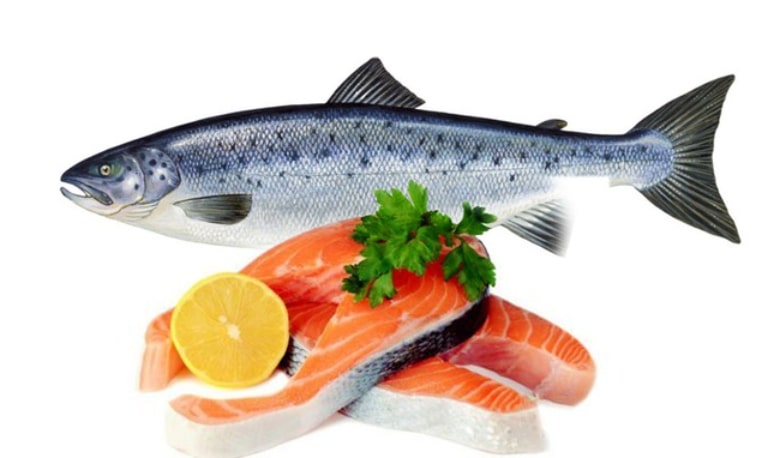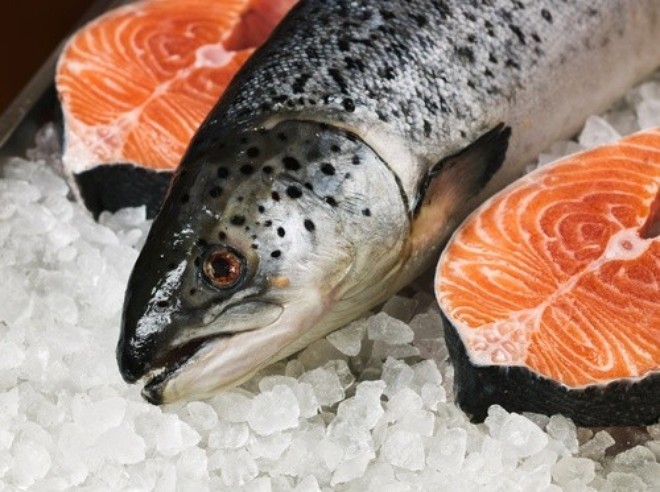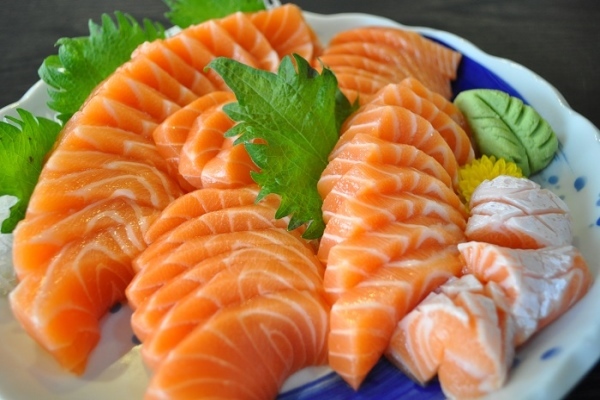
Salmon, a fish renowned for its high nutritional value and delicious flavor, has become a promising export product for Vietnam. With favorable natural conditions in certain regions, Vietnam’s salmon farming industry is gradually asserting its position in the international market.
1. Origin and Main Farming Regions
Although salmon is not indigenous to Vietnam, extensive research and the application of modern farming technology have enabled Vietnam to successfully develop salmon farming models. The popular salmon species raised in Vietnam is primarily rainbow trout (Oncorhynchus mykiss), which originated in North America and was introduced to Vietnam in the early 21st century.
Vietnam’s key salmon farming regions are concentrated in areas with cool climates, clean water sources, and stable temperatures, which are ideal for salmon development. The most prominent are the northern mountainous provinces, including:
- Lao Cai: With its mountainous terrain and temperate climate, especially in the Sapa area, Lao Cai was one of the first places to successfully implement salmon farming in Vietnam.
- Lai Chau: High-altitude areas like Tam Duong and Phong Tho also have favorable natural conditions for developing salmon farming.
- Lam Dong: The Da Lat area and its surrounding districts in Lam Dong are also bright spots on Vietnam’s salmon farming map due thanks to its year-round cool climate.
Salmon farms in Vietnam often apply advanced technology, ensuring ideal water quality and living environments for the fish, thereby producing high-quality salmon that meets export standards.

2. Superior Nutritional Value of Salmon
Salmon is dubbed a “superfood” due to its rich and diverse nutritional content, offering numerous health benefits.
- Rich in Omega-3 Fatty Acids: This is salmon’s most notable component, especially EPA and DHA. Omega-3s play a crucial role in supporting heart health (reducing bad cholesterol, preventing atherosclerosis), brain and vision development, reducing inflammation, and improving immune function.
- High-Quality Protein Source: Salmon provides a large amount of complete protein, containing all essential amino acids that the body cannot synthesize on its own. Protein is essential for building and repairing tissues, muscles, and producing enzymes and hormones.
- Essential Vitamins and Minerals: Salmon is a rich source of B vitamins (B1, B2, B3, B5, B6, B9, B12), which help with energy metabolism and nerve function. Additionally, salmon contains plenty of vitamin D (important for bones and the immune system), selenium (an antioxidant), potassium (regulates blood pressure), and phosphorus.
- Antioxidants: Salmon contains astaxanthin, a powerful antioxidant that gives its flesh its characteristic pink-orange color. Astaxanthin helps protect cells from damage by free radicals, supporting skin and eye health.
With these superior nutritional values, salmon is an excellent choice for all ages, from children to adults and the elderly.

3. Diverse Salmon Products
From fresh whole salmon, Vietnamese producers have processed a variety of products to meet both domestic and international market demands:
- Fresh whole salmon/fillet: This is the most popular product, used directly for dishes such as sushi, sashimi, pan-frying, grilling, steaming, and more.
- Frozen salmon: Quickly frozen to preserve freshness and quality, making it convenient for long-distance transport and storage. This product can be in the form of whole fish, fillets, slices, or chunks.
- Salmon roe (caviar): Although production volume is not as large as in developed countries, roe is also a high-value product harvested in Vietnam.
- Deep-processed products:
- Smoked salmon: Has a distinct flavor, often used in salads, sandwiches, or appetizers.
- Salmon pate: A convenient, nutritious product, suitable for breakfast or light meals.
- Salmon sausages, shredded salmon: Ready-to-eat products, convenient for family meals.
- Crispy fried salmon skin: A unique and collagen-rich snack.
The diversity of salmon products not only helps increase added value but also expands opportunities to reach different customer segments.
4. Export Markets
While the domestic market for Vietnamese salmon is rapidly growing, the export potential remains significant. Currently, Vietnamese salmon is primarily consumed in high-end restaurants, hotels, and major supermarket chains within the country. However, with continually improving quality and sustainable farming practices, Vietnamese salmon is gradually finding its footing in the international market.
Potential markets that Vietnam is targeting include:
- Southeast Asian countries: With geographical proximity and increasing demand for seafood, countries like Cambodia, Laos, Thailand, and Singapore are promising markets.
- China: This enormous market has a large demand for high-quality seafood products and is a strategic export target for Vietnam.
- Japan and South Korea: These markets are famous for dishes made from fresh raw salmon (sushi, sashimi), demanding very high quality. Successfully penetrating these markets would affirm the position of Vietnamese salmon.
- European and North American countries: Although facing fierce competition from large producers, with advantages in cost and stable quality, Vietnamese salmon can still find opportunities in niche markets or through specialized distribution channels.
Other articles:
Other agricultural products:


